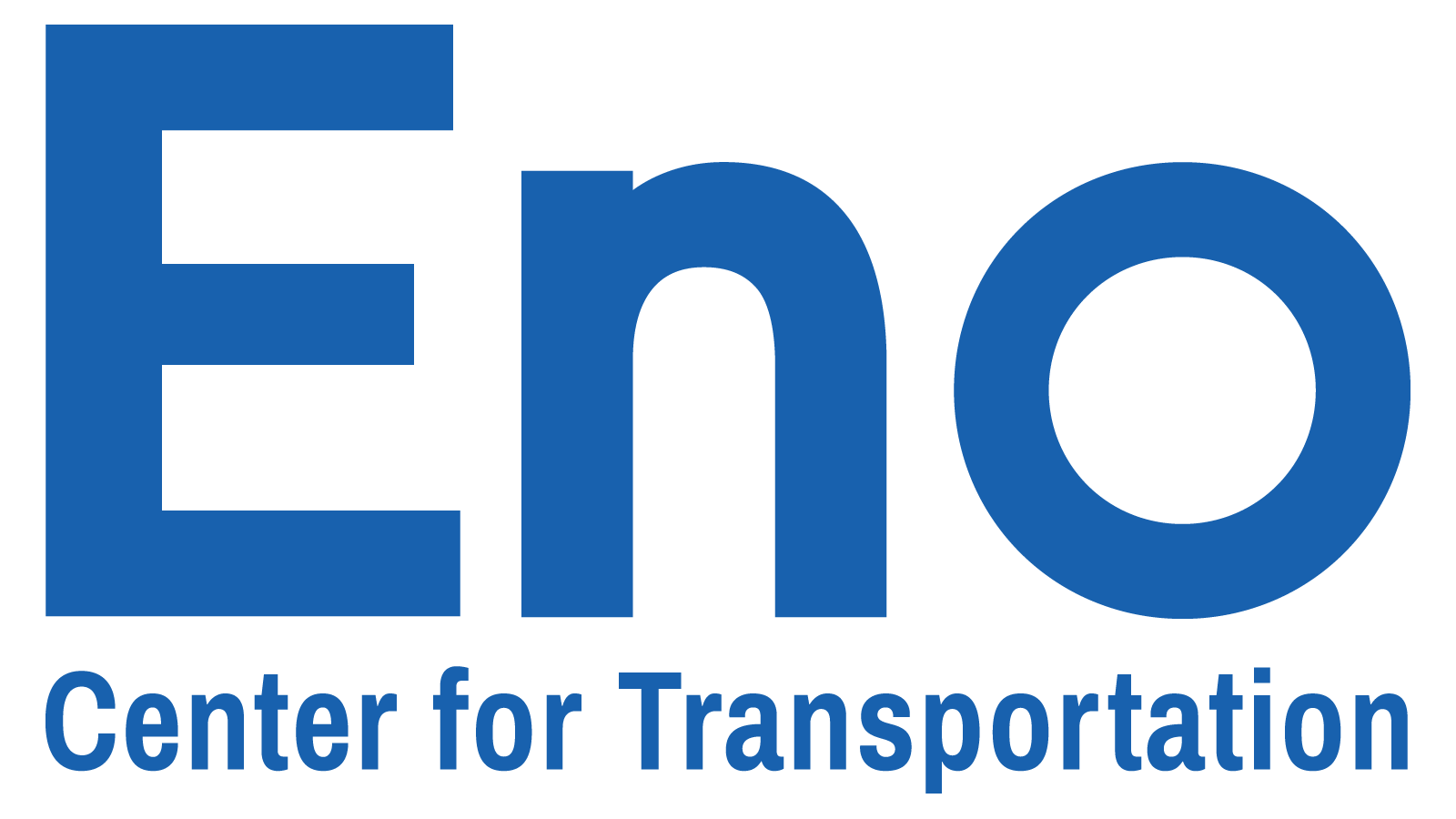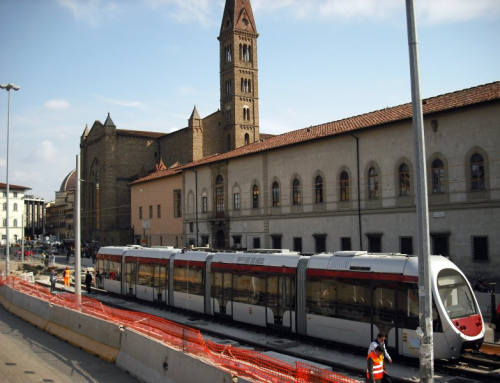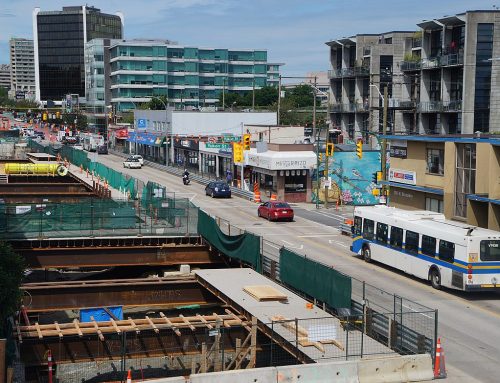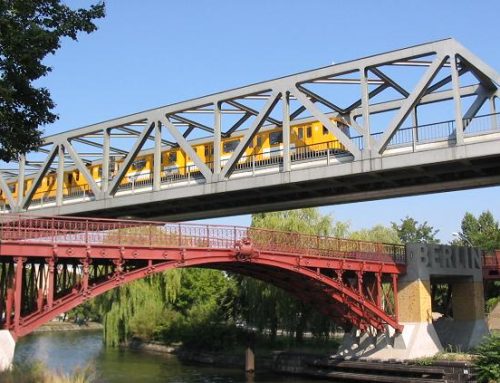Madrid
Madrid is home to one of the most extensive networks of metro and light rail networks in the world: the Metro system alone includes 242 stations on a 179-mile long network, which connects to an extensive light rail and commuter rail network. The region experienced a building boom from 1995 through 2008 that more than doubled the size of its metro, tram, and commuter rail transit network. This rapid expansion was in large part because it was able to build some of the least expensive tunneled transit lines in history.
Expansion of the region’s rail transit system has slowed markedly since 2008, with only 4.7 miles of track completed since then. This is largely because the system has been built out, and the region has been financially constrained since the European Debt Crisis of the early 2010s.
Table of Contents
Governance Overview
FIGURE 15: PRIMARY TRANSIT INSTITUTIONS IN MADRID
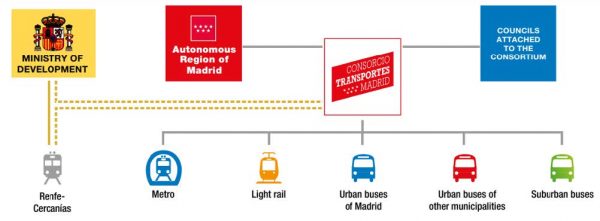
While the governance of rail transit in Madrid includes many organizations, the structure is straightforward. The Ministry of Development is a national agency responsible for intercity and commuter rail lines throughout the country. It funds and manages infrastructure development through a ministry-owned public company, ADIF (Administrador de Infraestructuras Ferroviarias), including the Chamartín-Atocha Tunnel under Madrid completed in 2008. The Ministry also owns the public company RENFE, which operates trains on ADIF infrastructure. RENFE Cercanías is the commuter rail subsidiary owned by RENFE. While the Ministry supports intercity and commuter rail, it rarely funds metro or light rail projects.
Urban transit systems are funded and managed through the Autonomous Region of Madrid. Autonomous communities are the first-level political and administrative divisions in the Spanish government. The Autonomous Region of Madrid contains the city of Madrid and 178 other municipalities.459 The Region plans, funds, constructs, and operates transit infrastructure through its subsidiaries, municipalities, and other organizations in which it has a stake.
The Consorcio Regional de Transportes de Madrid (CRTM) is a centralized transportation authority charged with organizing and coordinating all public transit modes in the region. Specifically, it plans transit infrastructure, establishes an integrated fare and information system, and coordinates transit services as well as distributes funding and resources to operating entities.460 CRTM oversees the Madrid Metro, the light rail networks, the urban buses of Madrid (EMT), urban buses of other municipalities, and suburban buses. It also coordinates with RENFE-Cercanías. The CRTM Board of Directors consists of 20 members including 12 local and regional representatives but also two each from the national government, trade unions, and the business community. One member is appointed from the riders’ union.461 CRTM requires a majority plus one to approve plans or changes within their jurisdiction, but almost all decisions are done through consensus to ensure complete buy-in from all regional stakeholders.
Madrid Metro owns, maintains, and operates the subway infrastructure. Most of the network is within the city of Madrid, but several lines extend into surrounding jurisdictions. It has a nine person board of directors, all of whom hold offices in the regional government or the CRTM.462 Staff at Madrid Metro work with CRTM planners to develop infrastructure plans and designs when necessary. Public funding for Madrid Metro comes from the regional government, flowing through CRTM.
MINTRA is a public company chartered and managed by the regional gove rnment and tasked with financing and building the subway expansions in the late 1990s and early 2000s.463 Formed as a SPDV, MINTRA was responsible for designing and bidding out construction of the subway segments. It originally rented the track to Madrid Metro, but eventually transferred ownership of the lines altogether. MINTRA was dissolved in 2011.464
The Madrid region has 4 light rail lines (ML-1, ML-2, ML-3 and ML-4), which all opened between 2007 and 2008. They were all constructed using DFBOM public-private partnerships, with 30-to-40-year concessions to operate and maintain the lines after construction. The concession contracts are managed by either CRTM or Madrid Metro (in some cases by both), supported by funding through the CRTM and farebox revenue.
The governance structure in Madrid—with multiple operators structured like companies and a regionally-owned consortium charged with unifying planning, branding and fares—proved useful in executing construction projects. At least 20 regions around Spain have since emulated the model.465
System Overview
TABLE 14: TRANSIT LINES PROFILED IN THE MADRID REGION
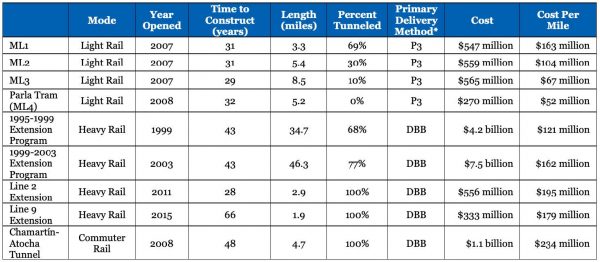
*A single delivery method is not always used on an entire project.
The subway extension programs between 1995 and 2003 represent some of the most impressive transit expansion projects in modern history. Itemized cost data on individual lines or stations is difficult to determine, in part because the projects were bundled as part of larger programs. Given that the expansions were completed nearly two decades ago, this case study presents them, along with the light rail build-out in the mid-2000s, as a portfolio of projects and intends to understand the governance and processes in place to make them a success.
Part of Madrid’s ability to keep tunneling costs low is that the region has relatively consistent and soft soils that are conducive to efficient construction using TBM.466 Spain was one of the first countries to have widespread use of TBM, with project leaders requiring their use over other, more traditional approaches like cut-and-cover and the New Austrian tunneling method.467 Further cost savings were achieved by using single bore tunnels rather than twin bores, which are used in the United States.468 Spain also has much lower labor costs and incomes compared to other countries, including in Northern Europe and the United States. Employers in Spain also do not have to pay for healthcare costs, an expense that American projects need to absorb.
Strong political alignment to build transit brings widespread public support to speed projects along.
Since the creation of the CRTM in the mid 1980s, the regional government had been planning to expand the region’s transit system. Then led by the Spanish Socialist Workers Party, it created planning and environmental documents for new lines and extensions. The expansion of the subways became a primary campaign issue in the 1995 regional government elections, with political factions competing on how much transit they could deliver. In 1995, the conservative People’s Party won the majority of seats in the regional parliament.469 A major campaign promise was to build 31 miles of new subway lines in the region during their 4-year term, out-promising the Socialist party opponents.470 The People’s Party made good on their commitment, constructing and opening 35 miles of new lines during their first term. During the 1999 elections, the party doubled down on the issue, promising to build an additional 47 miles during their next 4-year term. After winning an even larger majority, the People’s Party led the construction of 46 miles of subway over four years.
Though the subways were built by the conservative government, the projects had broad support across the political spectrum. This shifted the political debate to how much transit should be built, rather than if it should be built at all. While there were multiple factors behind the success of the subway build-out between 1995 and 2003, the political agreement on the need for transit investment is seen as crucial to enabling rapid development of the region’s network. Among other things, it led the regional government to acquire the financial resources necessary to deliver on its promise. To do so, it borrowed heavily, in some cases funding 80 percent of a line through debt. However, after the delivering the first expansion program from 1995-1999, the regional government’s infrastructure ministry did not have enough financing capacity to bond directly for future expansions. Instead, the regional government created publicly owned companies and used an SPDV and P3s to enable it to borrow without the debt appearing in the government’s budget.471
In 1999, the regional government created MINTRA, a state-owned company designed to deliver the subway expansion projects. As a governance tool, this structure was useful in delegating the specific task of project delivery to a government owned, third-party SPDV. SPDVs are often used to deliver projects, then either continue on as owners who rent access to the infrastructure, or transfer ownership over to an operator. As an independent unit, they can help staff focus on the delivering the project and managing contracts. To this end, MINTRA was created a high quality, single focus team that was successful in building out Madrid’s network.
Similarly, the Madrid region used PPPs to design, build, finance, operate, and maintain its light rail lines over a 30- to-40-year period. The regional government manages three different P3 contracts, each of which involves a consortium of private sector companies. The private companies are tasked with the short-term responsibility of delivering the light rail project and the long-term task of running the line efficiently. They receive regular base payments from the regional government and a variable payment based on how many passengers they carry in a certain month. The P3s were successful at delivering 22 miles of light rail at relatively low costs, despite some lines with significant tunneling. However, the P3 structure might not accurately portray the full upfront construction costs as some items are paid for over the life of the multi-decade contract.
However, the other reason that the regional government used MINTRA and P3s to deliver their rail lines was for clever accounting. Technically, MINTRA was considered a private entity, so its massive debt was not on the government’s books. Yet being owned by the regional government made holders of MINTRA’s debt confident that it had government backing, allowing MINTRA to borrow money at competitive rates. Similarly, the P3 consortia borrowed from the private market based on the availability of government payments that it would receive upon revenue service. Even though the P3 contract for the light rail lines pledge government support throughout the 30- to-40- year life of the agreement, these payments do not legally count as government debt.472
Using MINTRA and P3s, the regional government was able to indirectly borrow billions of Euros to rapidly fund and build its rail transit network. This debt undoubtedly helped move projects forward, but was also a major contributor to the European debt crisis that began in 2009.473 Governments struggled to fulfill their contractual agreement to support debt service of these entities and many others across sectors, and the resulting debt crisis exposed the extent of this hidden borrowing. This fallout is a large reason why Madrid has only built 4.7 miles of new subway extensions since 2008, most of which was in the planning and construction phase before the crisis hit.
Straightforward environmental standards and processes for transit projects in urban areas is a sensible approach.
In part due to the widespread political and public support for transit expansion, most experts and stakeholders in the Madrid region remarked about the relatively straightforward environmental standards and process. Like most of Europe, Spain has high environmental protection standards, but accounting for these impacts is straightforward given the top-down approach to these processes and a friendly political environment.
Environmental review in Europe and Spain works similarly to the United States. Following EU directives, the Spanish government requires large projects to prepare a document that evaluates various environmental impacts based on a series of project alternatives and requires some level of community engagement and feedback. Once satisfied, the national and local authorities grant approval and construction can begin. Despite these similarities, a few unique factors make the Spanish environmental review process simpler and faster than in the United States.
The scope of environmental impacts assessed is limited for transit projects. Given that most of these projects run through areas that are already developed, they are not required to evaluate their impact on the natural environment, such as wetlands and endangered species. Environmental assessments are mostly limited to construction noise, vibrations, construction air pollution and site water runoff, as well as some requirements to evaluate impacts on historical artifacts.
Additionally, permits for transit projects are simple and do not require multiple levels of review. The permitting process is unified so the regional government, CRTM, or other publicly-owned company has the ability to secure permits only once. For example, if a civil servant at MINTRA approved a design, it was not necessary for that design to be reviewed again by a civil servant at the city of Madrid. Not only does this make the permitting process faster and more controlled, but also makes it easier for the projects to avoid having to accept project betterments from localities.
Other elements like the discovery of historical artifacts are also handled in a streamlined, process-oriented fashion. If a project encountered artifacts or unearthed human remains, they became property of the national Ministry of Culture. The items are moved to a parallel area where the ministry conducts further studies, and the construction project is allowed to proceed. These processes are built on relationships between the public agencies and the construction managers, which helps foster trust among all parties.
Projects with minimal construction limitations and restrictions reflect widespread public support.
Community engagement for transit construction in Madrid is fairly limited. In Spain, the environmental review and design processes happen concurrently, and community engagement is mostly a top-down affair. The general perception around community engagement is that the government—in this case the regional government, who is planning and funding the projects—represents the will of the community and is thus empowered to make planning decisions.
Planners and designers hold public meetings to inform residents about project plans and solicit feedback. Neighbors do request changes, including the location of entrances and construction phasing sites, and if the majority of residents want a change, the plans are often modified. In cases where a change results in a cost increase, project staff can (and regularly do) deny the request. With widespread ideological support for subway and light rail expansion, the judicial system is not amenable to stopping projects over a dispute.
Such expediency and reliance on top-level planners to make major decisions about projects results in utilitarian stations, with no elegant architecture or expensive finishes.474 The subway network focuses on simple construction, wide escalators, and shallow stations to encourage rapid movement of people.475
While the narrowly focused environmental review and expedited community engagement helped move projects along and likely reduced costs, many of the experts interviewed believed that the Madrid system was built too quickly and with too little community engagement. Projects were effectively pushed onto neighborhoods with little concern for their particular needs or desires in a rush to meet project deadlines. This suggests that a more thorough community engagement process might have yielded more expensive but perhaps better projects.
Related, most subway projects were incredibly disruptive to neighborhoods during their construction periods. The tunneling operation was conducted around the clock and construction shut down roads for extended periods of time. This is in contrast to typical projects in the United States, where noise limitations restrict work hours for certain construction activities, and projects have limited ability to shut down traffic. The fact that Madrilenians were willing to accept construction disruption as a tradeoff for quicker completion inevitably saved the project region significant costs.
While construction was disruptive in the short term, work moved so quickly that an impacted neighborhood was back to normal again in a matter of months or weeks. For the 1995-2003 subway expansion projects, the tunnel boring machines averaged 282 feet per day, resulting in minor disruptions over the long term.476 For comparison, the tunnel boring machines under Los Angeles in the current Purple Line extension project currently average 70 feet per day, and because the line is twin bored, the TBMs have to pass twice, causing additional disruption.477 The slow pace of tunneling in Los Angeles is in part due to work hour restrictions and roadway access limitation imposed by local communities.
Competent in-house teams that manage multiple small contracts can effectively push major projects forward.
For the subway expansion projects, MINTRA and the regional government relied on a small team of highly qualified engineers and project managers to oversee the design and construction consultants.478 The project managers used consultants for discrete tasks but did not use outsourced labor for managing the overall project. The strong investment in institutional capacity at the public agency or publicly owned company overseeing construction was important to the region’s overall success in delivering low-cost projects.
The in-house talent was first developed at the regional government, and their skills were honed during the 1995-1999 expansion program. Much of this staff then moved to MINTRA during the 1999-2003 program, where approximately 150-200 in-house staff helped manage contracts and plans.479 The fact that MINTRA was technically a private company also allowed it to offer higher salaries than comparable public-sector positions, attracting top talent to the firm. In addition, with promises of significant expansion and widespread public support, national and international construction firms staffed up and were ready to quickly put together proposals.
For subway procurement, MINTRA used a DBB method. Project managers and engineers wanted significant control over tunneling methods and felt that DBB was important to keeping risks low for private bidders given the unknowns with the underground environment. Though the entire project cost billions of Euros, the subway lines were bid out in smaller, more manageable packages with contracts that rarely exceeded €200 million ($241 million).480
While breaking up large projects into smaller packages required managers to oversee many contracts as opposed to a single, multi-billion-euro contract, this approach held a few distinct advantages. First, if there was an issue with a contractor, the managers could focus on resolving that issue while construction continued elsewhere. Second, the discrete contracts fostered more competition and allowed small, newer firms to compete and win projects. These firms diluted the power of larger firms, avoiding situations where a few large companies dominate decision making. This competition helped keep costs down while also creating a homegrown field of experienced contractors that now work all over the world.
